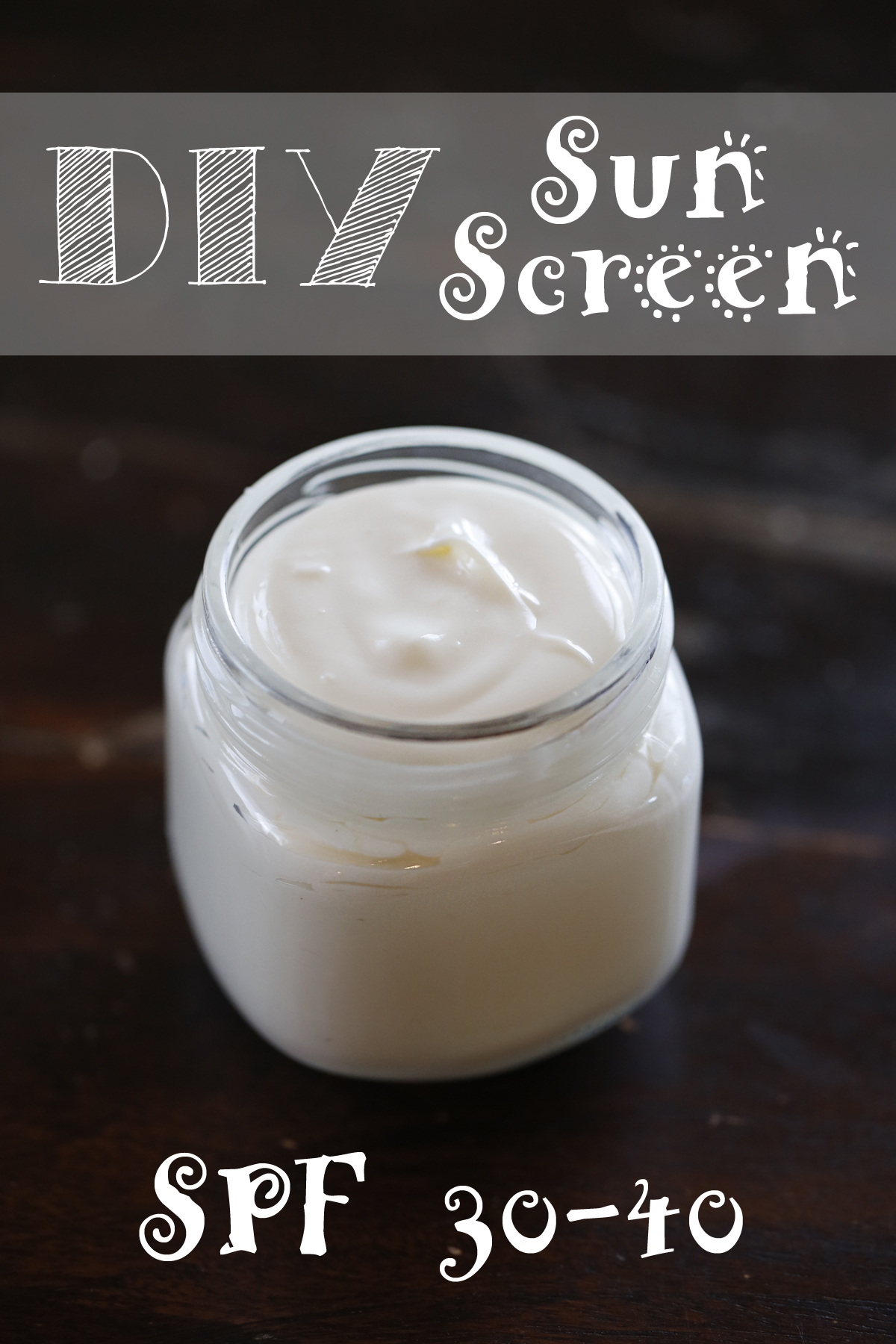
So before we get started here, let me just tell you, sun screen is so expensive these days. And living in Arizona, it has become a daily necessity for my family. I didn’t decide to make my own sun screen out of frugalness alone. I really do enjoy using all natural products, and my kids do to. They love seeing what goes into what and why its better for our bodies, and yada yada yada. When I sought out this new DIY adventure, I did my research. The biggest question was, what is SPF really? All I knew was that the higher the label, the harder that crap is to rub into my kids skin. And most of my kids, a lot like my self, go fifty shades of aborigine in the first weeks of summer. So my right arm gets freakishly stronger in those weeks just trying to keep that sun screen from looking like war paint on their dark chocolaty skin. The struggle is real folks. But to be honest, we don’t use a really high spf. We ride around 30 most of the time, because we like to live life on the edge.
So here is the mystery of SPF unfolded for you. You’re welcome.
Sun Protection Factor
Answer: SPF stands for Sun Protection Factor and refers to the theoretical amount of time you can stay in the sun without getting sunburned. For example, an SPF of 15 would allow you to stay in the sun 15 times longer than you could without protection.
So here are some things I found out while getting to know the ins and outs of homemade sun screen. The higher the SPF, the longer you can feel safe hanging out in the blazing sun. And, many oils have a natural amount of SPF, and zinc oxide is the key ingredient. I would say most of you know that when you use those easy spray bottles, not only should you wear a gas mask, they seem to wash off rather quickly in the pool. And my friends, we do as best as we can to live in the water in the hotter months. It’s the only way to survive. With DIY sunscreen you need something that can make the oils stay on your body, that’s where the bees wax comes in. It acts as a waterproof. The amount of bees wax you use needs to be pretty close to this recipe, too much will make it to hard to rub onto your skin. So if you over do it, you better have the patience of Mother Theresa.
I bought my zinc oxide from Essential Depot. And I’ve taken the liberty of listing the natural SPF for the oils that I used next to the quantity below. There is a site called Living pretty, Naturally, You can see some additional oils that are great for sun screen.
(I used what I already had on hand. I can’t even remember when or why I bought zinc oxide, but I was glad to finally put it to use.)
Ingredients
•1/2 cup coconut oil SPF 2-8
•1/4 cup jojoba oil SPF 4
•2 tbsp-1/4 cup beeswax* (depending on how thick you want it) SPF 15
•1-2 tbsp shea butter* SPF 6
•1 tsp vitamin E oil
•2 tbsp zinc oxide powder SPF 10 per tsp

I used a white bees wax and grated it down with a cheese grater. I don’t recommend that method, I would suggest if you are going to attempt this, go buy the bees wax pellets. But like I said earlier, I was working on the fly.

So lets talk about this zinc oxide funny business. Just so you know, Zinc oxide is a natural mineral which provides the safest and most effective protection against UV rays. Unlike chemical sunscreens, zinc forms a physical barrier on the skin, reflecting the sun’s rays rather than absorbing them. Zinc Oxide is the best performing ingredient for blocking both UVA and UVB rays. I stole that from the world wide web.

To get started, combine all your oils, shea, and bees wax. You are going to melt them down so either use a double boiler or microwave.

This is my makeshift double boiler.

Once your oils, shea, and bees wax are fully melted remove from heat and let sit for about five minutes just to cool down.

Add in your two teaspoons of zinc oxide.

Since there is roughly 10 SPF per tsp, if you wanted a stronger sun screen, you can add an additional 1/2-1 tsp. But I have found that this recipe does really well for my husband, who’s nickname was “sunburn central” in high school.


Make sure you get the little clumps crushed up.

From there you just continue to stir until it is the consistency of lotion. It may firm up based on temperature. When you apply your DIY sun screen, put a small amount on the palm of your hand and rub your hands together. The heat from your hands will melt the oils down for the quickest application.

I am totally in love with this sun screen, and have had great results! Its smells great, feels great, repels that water for hours of fun.


























































